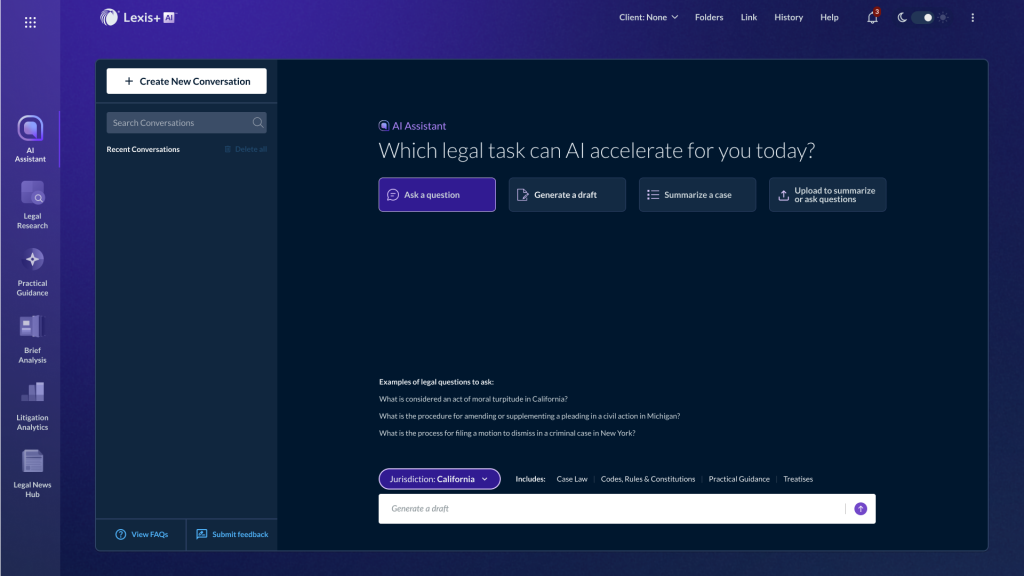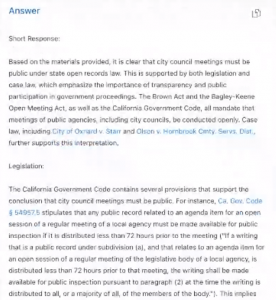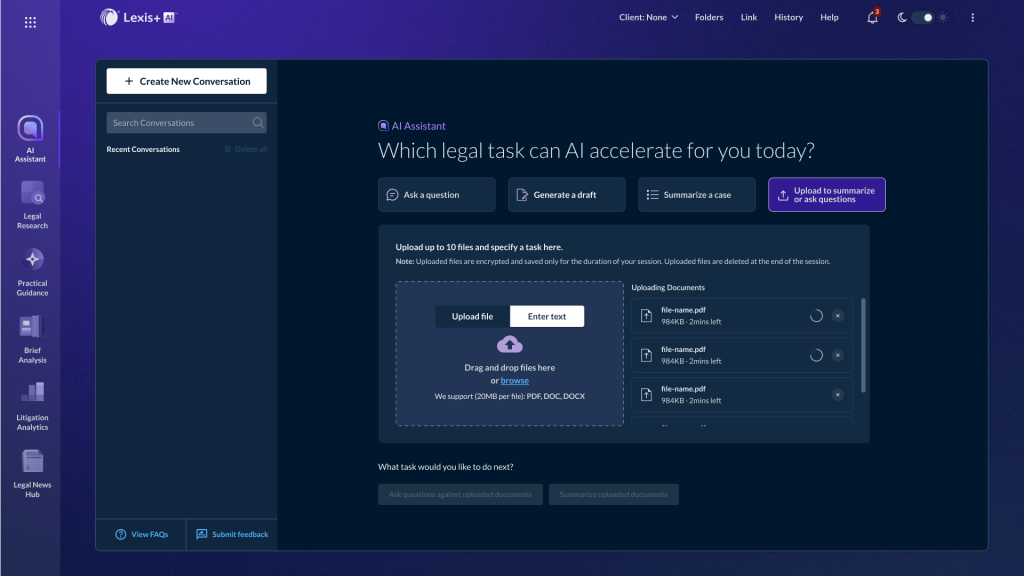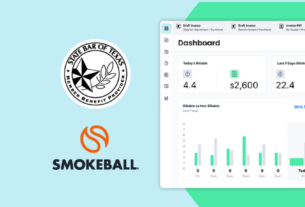Last May, LexisNexis first revealed plans to launch Lexis+ AI, a new product that would use large language models to answer legal research questions, summarize legal issues, and generate legal document drafts. At the time, it limited availability to a select group of Am Law 50 firms that had agreed to participate in a commercial preview.
Today, LexisNexis is lifting that limit and making Lexis+ AI generally available for U.S. customers. The product, it says, delivers trusted results with “hallucination-free” linked legal citations, combining the power of generative AI with proprietary LexisNexis search technology, Shepard’s Citations functionality, and authoritative content.
Before releasing the product, LexisNexis expanded that commercial preview and testing to include not just Am Law firms, but also corporate legal departments, small law firms, and U.S. courts. That testing led to a number of refinements to the product, Jeff Pfeifer, chief product officer for LexisNexis in Canada, Ireland, the U.K. and the U.S., said during a preview Monday for members of the media.
LexisNexis did not provide me or other members of the media with an opportunity to test the new product before today’s release. It claims that the product is “multiple times faster than any other legal generative AI solution available today.”
It also says:
“Lexis+ AI is the only legal generative AI solution with citations linked in its responses, providing trusted legal results backed by verifiable authority. It minimizes the risk of invented content, or hallucinations, and checks all citations against Shepard’s to ensure citation validation. The solution also offers users the ability to input specific citations to verify accuracy and flag when a citation might be wrong. Customers can give instant feedback within the product to continually improve product performance, content relevance, and overall product accuracy.”
I asked a spokesperson to clarify this, as my understanding is that it is not correct that this is the only legal generative AI product with citations linked inline in its responses. For one, the new Vincent AI from vLex does that, as I wrote when it launched last week.
The spokesperson responded:
“While we do not comment on specific third-party announcements and this specific product is labeled as a product in beta, our claim relates to our focus on placement of citations with answer components from our Lexis+ AI large language model service.
“From public source materials, the authority in the referenced product is not inline with specific legal concepts or holdings. Lexis+ AI both lists citations inline in response, provides additional citation references and key Shepard’s indicators.”
My understanding is otherwise, in that the vLex product does contain citations directly inline in its answers. (See screencap.) That said, whether Lexis or vLex or someone else was first to offer this is not really important in the scheme of things.
Launching with Four Core Tasks
What is important is what Lexis+ AI can do. As it becomes generally available today, it is launching with the ability to perform four core tasks:
- Conversational search, by which legal researchers can interact with the AI in back-and-forth conversations, asking questions and then asking the AI to adjust or refine the response.
- Document drafting, by which a user can quickly produce legal arguments, contract clauses, client communications and the like, all from a simple user prompt.
- Summarization, providing summaries of cases in seconds.
- Document uploading, to enable users to analyze, summarize, and query either a single legal document or a set of up to 10 documents.
All of this has the capability to draw on a set of LexisNexis research materials that includes primary law, secondary sources, practical guidance, constitutions and court rules, and select federal agency decisions. The exact content depends on the user’s subscription, as is further discussed below.
LexisNexis has repeatedly emphasized the security of Lexis+ AI. Any uploaded documents are automatically purged at the end of each session or after 10 minutes of inactivity, and users can manually purge documents at any time and manage or delete their prompt conversation history.
Pfeifer said that the company will be continuing to add new tasks to Lexis+ AI in the coming weeks and months.
The company also says that the product’s accuracy is continually improving with hundreds of thousands of rated answer samples by LexisNexis legal subject matter experts used for model tuning. The company says it employs over 2,000 technologists, data scientists, and subject matter experts to develop, test, and validate its products.
With regard to the AI models behind this product, LexisNexis says it is using a flexible, multi-model approach that prioritizes the best model for each legal use case. At this point, it is working with two of the major LLMs — Anthropic’s Claude 2, hosted on Amazon Bedrock from Amazon Web Services (AWS), and OpenAI’s GPT-4 and ChatGPT, hosted on Microsoft Azure.
To help guide users in making the best use of this technology, the product includes guided experiences to help lead customers through its use and training in prompt engineering to help users get the best results.
As with other LexisNexis products, the answer to what it costs is, “It depends.” In this case, it depends on which tasks the customer wants to purchase and which types of content it wants to have access to.
In an effort to make it affordable to smaller firms, Pfeifer said they will be able to purchase either the conversation search module or the draft and summarize modules at set prices.
Bottom Line
In a statement provided by the company, Sean Fitzpatrick, CEO of LexisNexis North America, UK, and Ireland, said, “Lexis+ AI gives legal professionals a significant competitive advantage by driving improved speed, productivity, and work quality gains for law firms and their clients.”
It is important to note — and Pfeifer made this point explicitly — that Lexis+ AI is a complement to, not a replacement for, traditional legal research tools. As Fitzpatrick’s quote says, it can help speed specific research tasks and enhance productivity.
That said, it is amazing how far we’ve come in so little time in developing legal-specific tools using generative AI. What Lexis has built here is impressive, not just for what it can do, but also for what it does not do, such as hallucinate or expose your data.
We are still in the early innings here, and there are multiple teams in this game. I, for one, will be closely watching how this product develops and is adopted, and how the other players respond.





